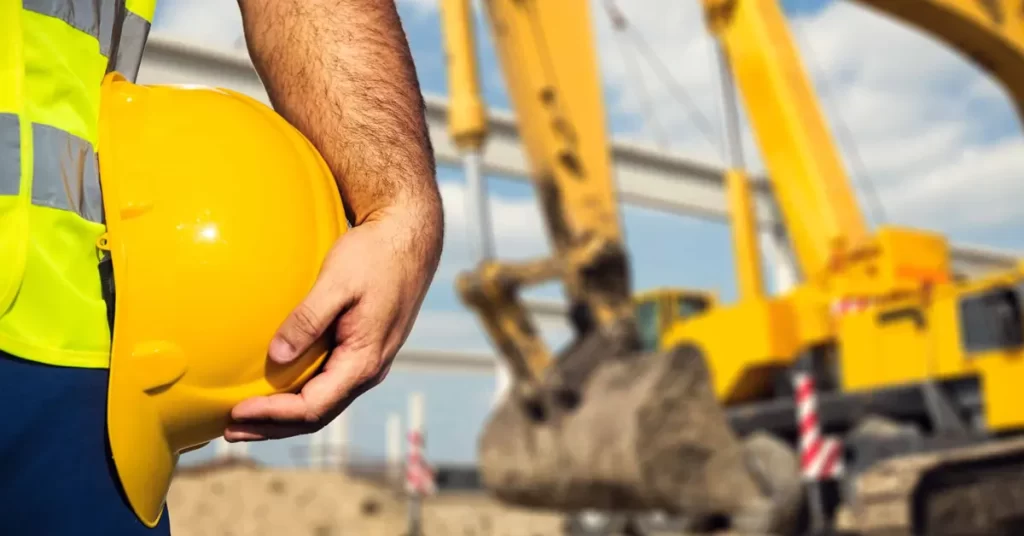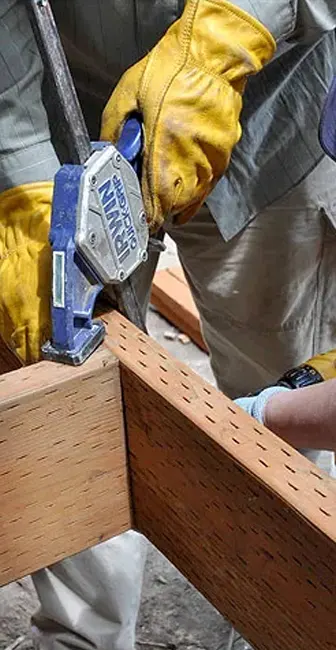When you hire us as your general contractor, safety becomes our top priority. We’ve been managing projects for years, and we know that a safe construction site means happy workers and successful projects. Every day, we walk through your project thinking about potential dangers. We check equipment, talk to our crews, and make sure everyone goes home safely. Let’s talk about how we keep your project secure and running smoothly.

Common Construction Site Hazards on Modern Projects
You might wonder what dangers we face daily on projects. Falls remain the biggest threat, especially when working on multi-story buildings. We also deal with electrical hazards from temporary power setups. Moving equipment creates blind spots where accidents can happen quickly.
Weather adds another layer of complexity to our safety planning. Rain makes surfaces slippery, while extreme heat can cause dehydration and fatigue. We constantly monitor these conditions and adjust our work schedules accordingly.
Types of Construction Hazards: From Heavy Machinery to Occupational Risks
Heavy machinery requires special attention on every construction site we manage. Excavators, cranes, and forklifts need certified operators and clear operating zones. We establish specific paths for equipment movement and keep workers aware of these routes.
Beyond machinery, we watch for occupational risks like repetitive strain injuries. Our teams handle heavy materials daily, so proper lifting techniques matter. We also monitor exposure to dust, chemicals, and loud noises that can affect long-term health.

Construction Site Safety: Best Practices for General Contractors
Our safety approach starts before breaking ground on your project. We develop comprehensive safety plans tailored to each construction site and its unique challenges. Regular toolbox talks keep safety fresh in everyone’s minds.
Here’s what we implement on every project:
- Daily safety briefings before work begins
- Weekly equipment inspections and maintenance checks
- Monthly safety training sessions for all crews
- Clear signage marking hazards and safety zones
- Personal protective equipment requirements for everyone
We believe prevention beats reaction every time. That’s why we invest heavily in training and proper equipment.
Managing Safety Risks in Construction: The General Contractor's Approach
Risk management starts with identifying potential problems before they happen. We conduct thorough assessments of each work area daily. Any new hazards get addressed immediately, not tomorrow or next week.
Documentation plays a huge role in our safety strategy. We record near-misses, minor incidents, and safety observations. This data helps us spot patterns and prevent future accidents. Every construction site teaches us something new about safety.
Technology helps us stay ahead of risks too. We use apps for real-time safety reporting and drone inspections for hard-to-reach areas. These tools give us eyes everywhere without putting anyone in danger.
The Construction Company's Commitment to Safety: Beyond Basic Safety Rules
Safety isn’t just about following OSHA guidelines, though we certainly do that. We create a culture where everyone feels responsible for safety. New workers get paired with experienced mentors who model safe practices daily.
We invest in the best safety equipment available, not the cheapest options. Quality harnesses, helmets, and protective gear make real differences in preventing injuries. Regular equipment updates ensure our teams work with reliable tools.
Our commitment extends to subcontractors working on your construction site too. Everyone follows the same high standards, regardless of who signs their paychecks. We run background checks and verify safety records before bringing anyone onto your project.
Safety success comes from consistency, communication, and genuine care for our workers. When you choose us, you’re choosing a team that values people over profits.
Contact Us
Frequently Asked Questions
How much do these safety measures add to my project's overall cost?
Safety investments typically add 2-3% to project costs but save money long-term. Accidents cause delays, lawsuits, and worker compensation claims that far exceed safety expenses. Most clients find that proper safety planning actually keeps projects on schedule and budget by avoiding costly disruptions and maintaining steady workflow.
What happens if an accident occurs despite all these safety precautions?
We immediately activate our emergency response plan, ensuring injured workers get medical attention. We document everything, notify relevant authorities, and conduct thorough investigations. Our insurance covers incidents, protecting you from liability. We then analyze what happened, implement corrective measures, and share lessons learned with all crews to prevent recurrence.
How can I verify a contractor's safety record before hiring them?
Request their Experience Modification Rate (EMR) – anything below 1.0 indicates good safety performance. Check OSHA’s website for violation history. Ask for safety certifications and training records. Request references from recent projects and specifically ask about safety incidents. Good contractors willingly share this information and pride themselves on transparency.
